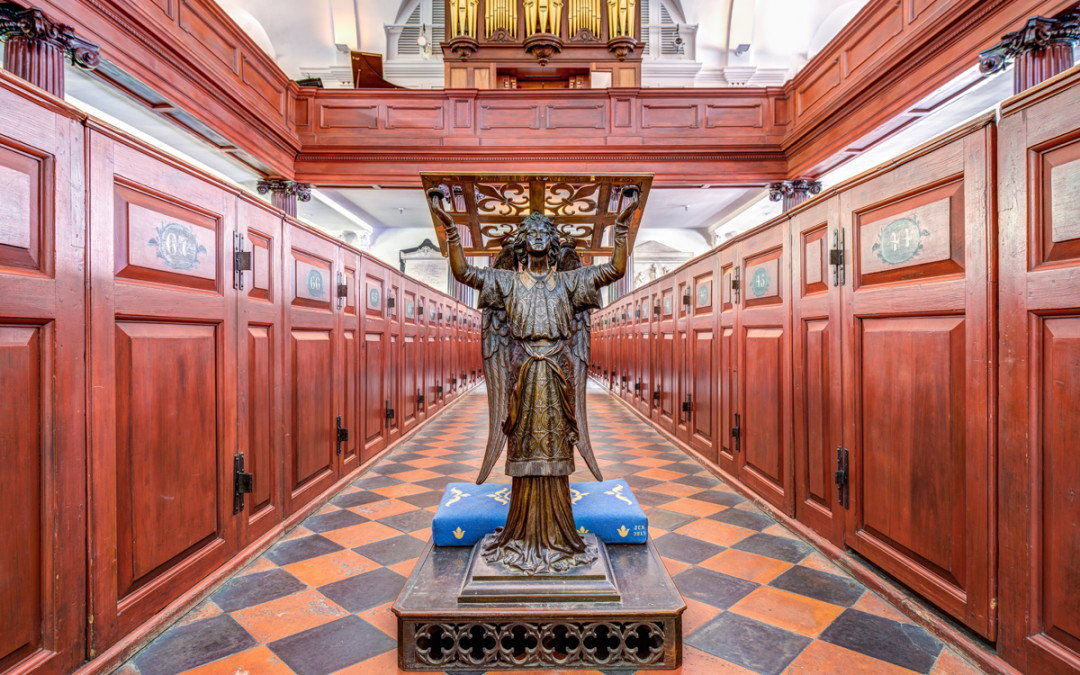To see the full St. Michael’s Photo Gallery click here.
St. Michael’s Church in Charleston is a staggering collection of numbers and history. It is the oldest church building in Charleston. That’s no easy task, as Charleston is known for its incredible historic churches. St. Michael’s came into being in 1751 when the congregation of St. Phillip’s outgrew its second building in 25 years. The parish was split in half and St. Michael’s was born. Ironically the fledgling congregation was given the previous site of St. Phillip’s at the corner of Meeting and Broad Streets, where they remain to this day. The building was begun in 1752 and took 10 years to complete, and the architect remains unknown to this day. The design is very much influenced by Christopher Wren and James Gibb’s London churches.
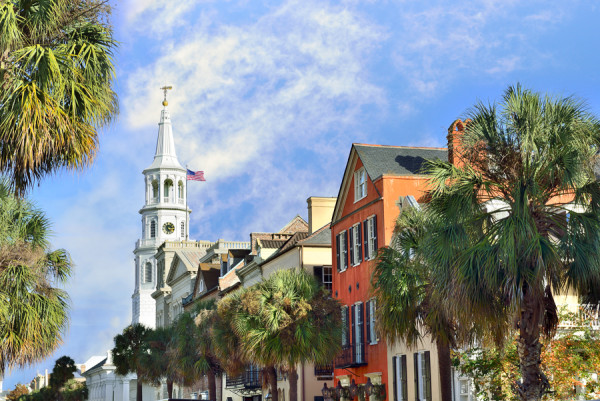
Bells
The bells in the steeple were bought and installed in 1764 from Whitechapel Foundry in London. They would return to Whitechapel numerous times. These bells are perhaps the most well traveled church bells in the US at a minimum. Stolen by the British as a spoil of war in the American Revolution they were taken to London, and eventually returned by a London merchant. Shortly after their return two bells cracked and Whitechapel recast them. During the Civil War the bells were being stored in a shed in Columbia for safekeeping when the city was burned the shed burned as well, cracking two bells and necessitating another trip to Whitechapel. While being reinstalled in the steeple in 1868 the frames were made incorrectly and the bells could not be rung. They were merely chimed until 1989. In that year Hurricane Hugo came and did tremendous damage to the city of Charleston and damaged the bells once more, and the bells were returned to Whitechapel again, now known as Whitechapel Bell Foundry (and still open, click here for their website) repaired and returned to Charleston where in 1993 they were rehung in the correct framing (by Whitechapel themselves this time) and were rung again for the first time since 1868. These bells are now a mainstay of Charleston. But that’s 9 trips across the Atlantic Ocean, I can’t be positive but I would venture that is a record!
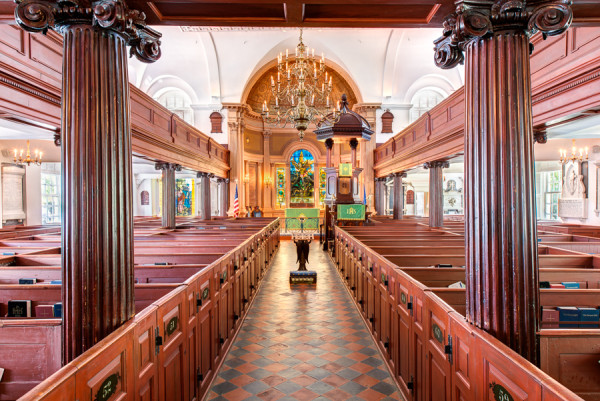
St. Michael’s has been through a tremendous amount. It has been shelled in two wars. Charleston underwent 42 days of shelling during the Revolution and another incredible 587 day during the Civil War. St. Michael’s was a frequent target of both Union and British gunners and was hit by shellfire several times. During both wars the church was painted black to keep it from being seen at night. Several photos exist of St. Michael’s in black from the end of the Civil War. One burst during the Civil War did extensive damage to the steeple and the pulpit still bears the scars of this burst to this day. The box pews are original, and Pew #43 in particular is interesting. Originally intended as the Royal Governor’s pew during Colonial days, it became a pew for special guests of the church including two Virginia Generals, George Washington and Robert E. Lee. The Earthquake of 1886 sank the entire steeple 8 inches and severely cracked the northern wall.
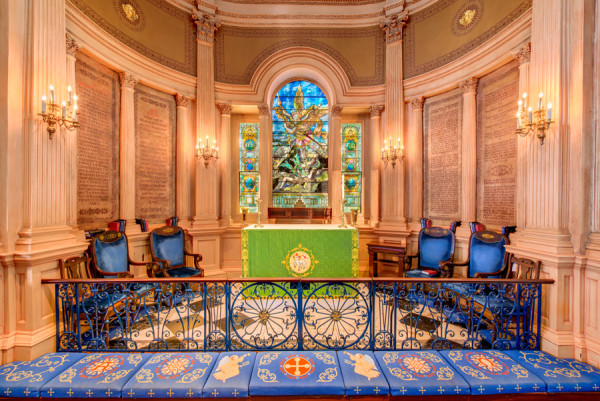
The Chancel damage was repaired in 1905 by none other than Tiffany and Company and the window in the chancel presently of St. Michael vanquishing the Dragon, based on Raphael’s work, is also a Tiffany. Charleston’s legendary 20th century architect Albert Simons completed the work in the 1940’s and the result is what we see inside the church today. The chandelier is even original to 1803, having been originally for candles, then gas and then finally electrified. The graveyard surrounding the church is amazing as well boasting, signers of the Constitution John Rutledge and Charles Cotesworth Pinckney (this is very confusing at times to some as John’s brother Edward signed the Declaration and Charles’s cousin Charles Pinckney also signed the constitution, further complicating this is the both relatives are buried in St. Phillip’s giving one Rutledge and one Pinckney to each church!). Also here is Charleston lawyer James Louis Petigru, whose Unionist opinions kept him from being elected to public office prior to the Civil War, but did not stop him from attending the Ordinance of Succession Convention (in Columbia) where someone asking him the location of the lunatic asylum received a point in the direction of the convention, and the wry remark that “There is more lunacy in that building than any other in South Carolina, I assure you sir.” Petigru’s tombstone is nearly 6 feet tall and was quoted by Woodrow Wilson in the “14 Points” speech at the end of WWI. The graveyard also had one the few headboard tombstones left in Charleston (as of this writing the original is in the Charleston Museum and a replica in its place in the graveyard).
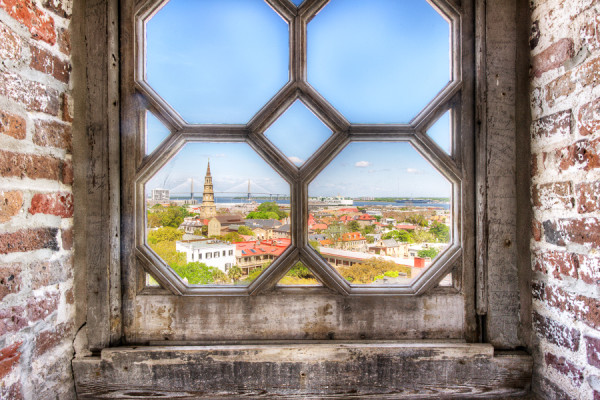
St. Michael’s gleaming white steeple is visible for miles in any direction and is 186 feet tall with a 7 and 1/2 foot weather vane. The clock originally had only an hour hand, but City Council voted funds to add the minute hand for the church as a clock tower for the entire city. The church even served as a lookout point during every war the city has seen up until WWII. The church is a vital building to the city of Charleston today and an irreplaceable landmark. The church can be seen at 80 Meeting St. and is open to the public most days, and should not be missed.
To see the full St. Michael’s Photo Gallery click here.

